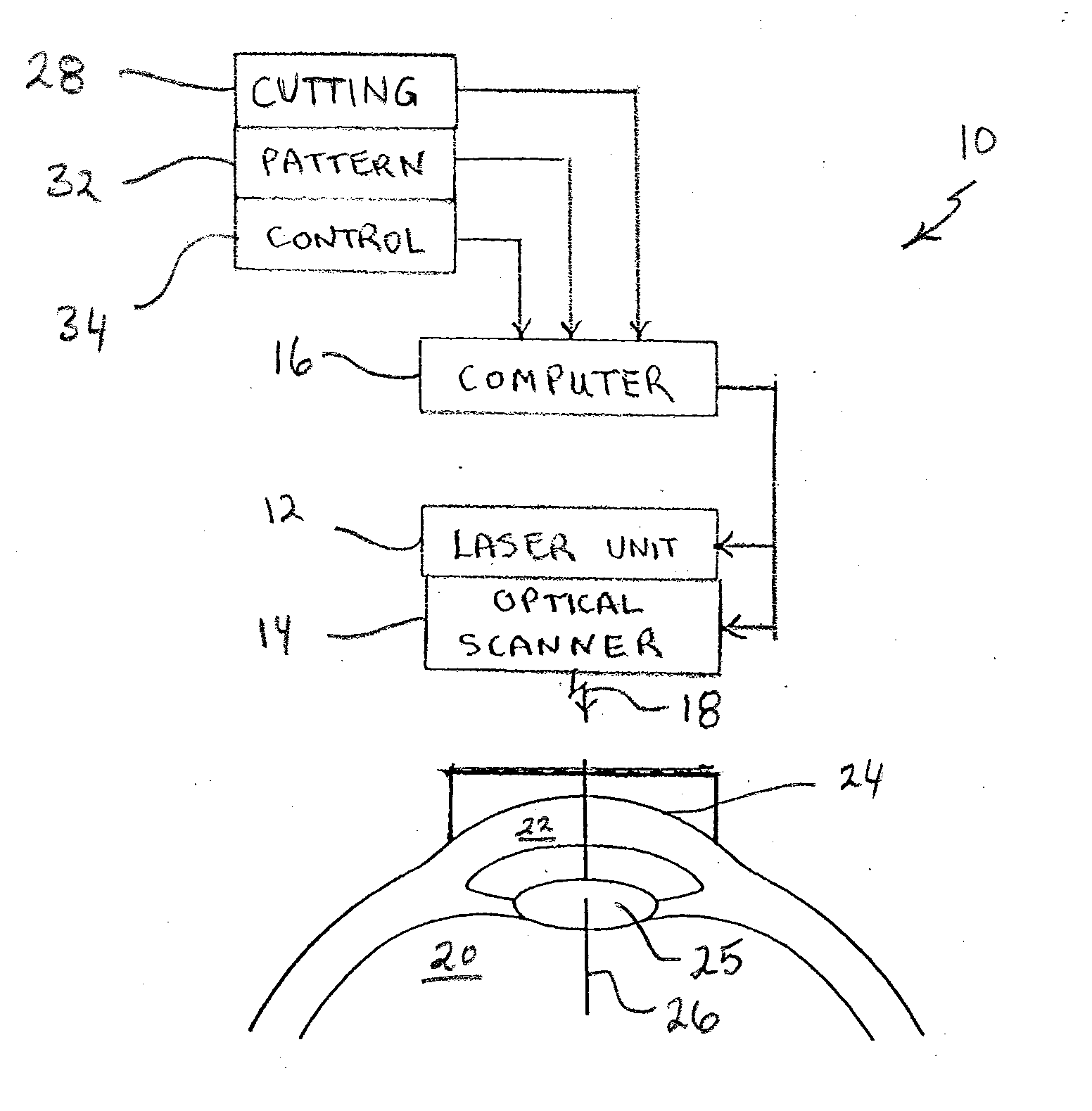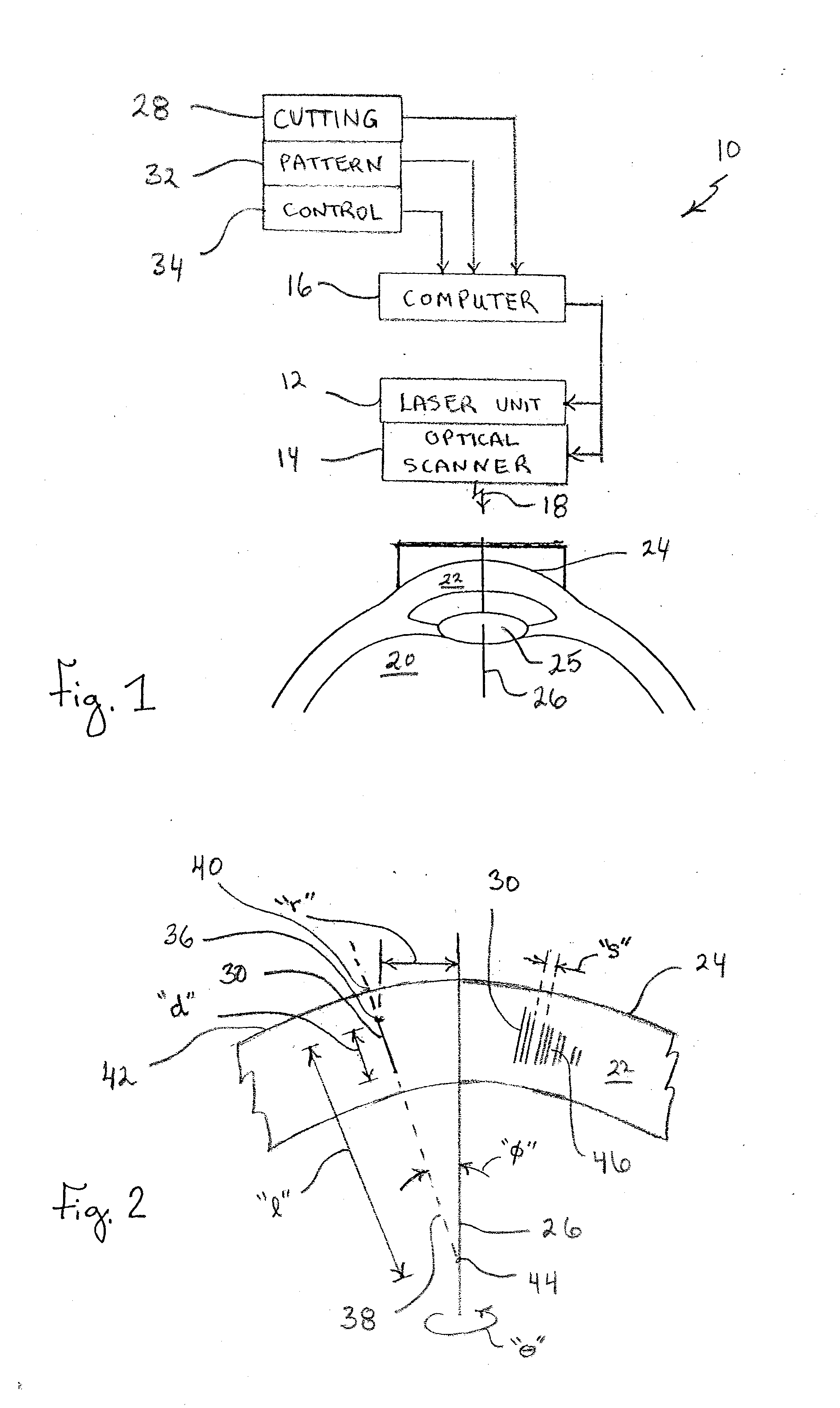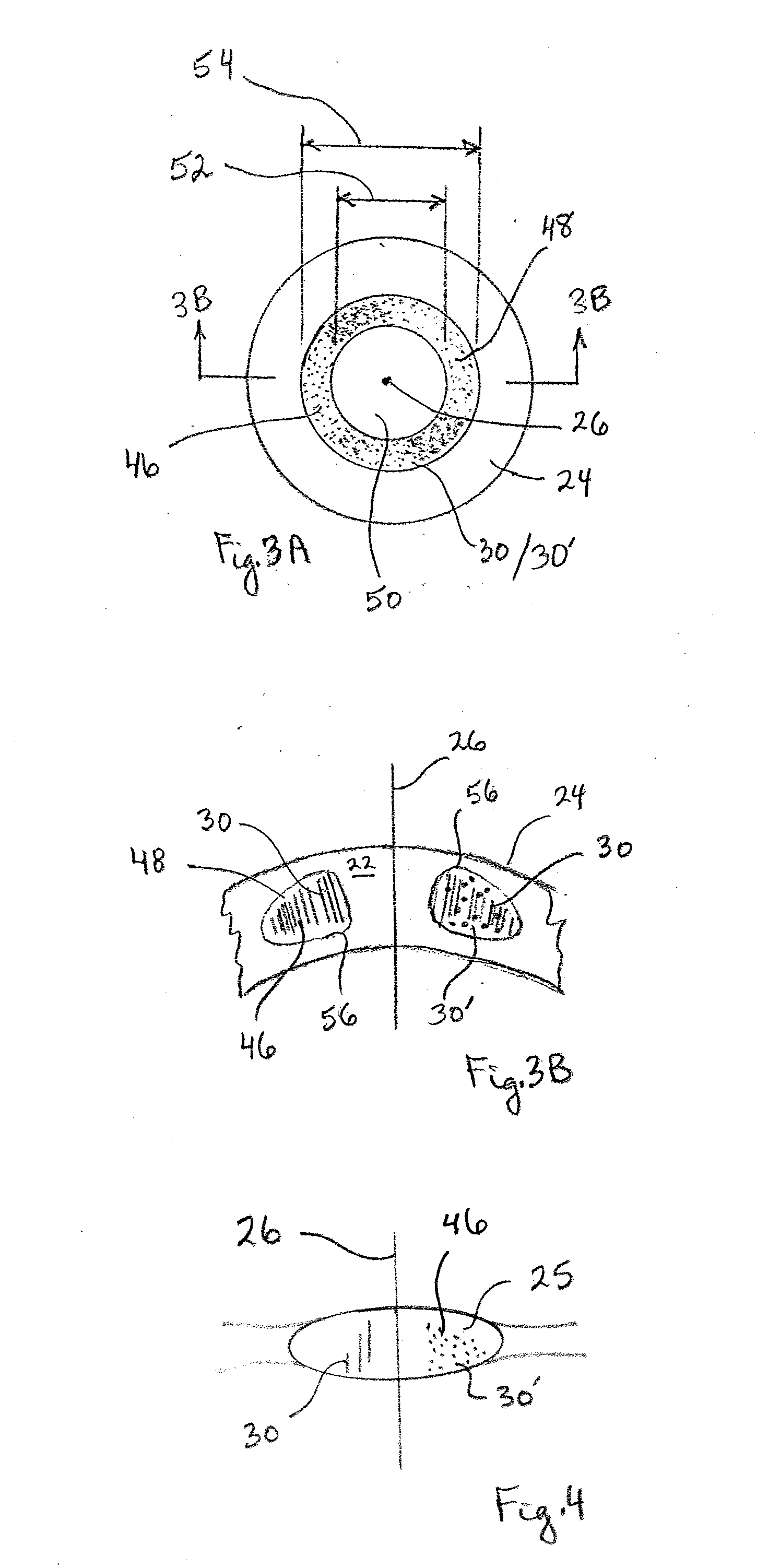System and Method for Minimizing the Side Effects of Refractive Corrections Using Line or Dot Cuts for Incisions
a refractive correction and line or dot technology, applied in the field of system and method for minimizing the side effects of refractive correction using line or dot cuts for incisions, can solve the problems of introducing uncertainties that may compromise the final refractive outcome, annoying side effects in the night, and annoying side effects, so as to achieve the effect of weakening the biomechanical stress distribution
- Summary
- Abstract
- Description
- Claims
- Application Information
AI Technical Summary
Benefits of technology
Problems solved by technology
Method used
Image
Examples
Embodiment Construction
[0021]Referring initially to FIG. 1, a system for performing refractive surgery on an eye (transparent material) is shown and is generally designated 10. As shown, the system 10 essentially includes a laser unit 12, an optical scanner 14 and a computer 16. In combination, the computer 16 is used to control both the laser unit 12 and the optical scanner 14 to respectively generate and direct a pulsed laser beam 18. The laser beam 18 is then used to perform refractive surgery on an eye 20. More specifically, the system 10 directs and focuses the laser beam 18 into the stromal tissue 22 of the cornea 24 of an eye 20 or into the lens 25 of the eye 20 to perform this surgery.
[0022]For purposes of control, the laser beam 18 is moved relative to a reference axis 26 that is defined by the eye 20. This reference axis 26 can be either a visual axis, an optical axis, a line-of-sight axis, a pupillary axis or a compromise axis. For operational purposes, the laser beam 18 can have any characteri...
PUM
 Login to View More
Login to View More Abstract
Description
Claims
Application Information
 Login to View More
Login to View More - R&D
- Intellectual Property
- Life Sciences
- Materials
- Tech Scout
- Unparalleled Data Quality
- Higher Quality Content
- 60% Fewer Hallucinations
Browse by: Latest US Patents, China's latest patents, Technical Efficacy Thesaurus, Application Domain, Technology Topic, Popular Technical Reports.
© 2025 PatSnap. All rights reserved.Legal|Privacy policy|Modern Slavery Act Transparency Statement|Sitemap|About US| Contact US: help@patsnap.com



